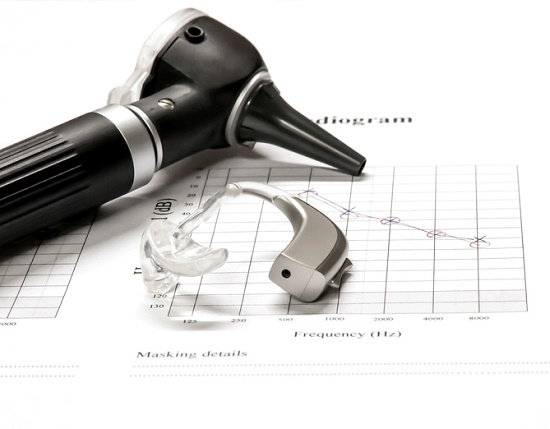
Are you planning on investing in hearing aids?
If the answer is yes, it can seem intimidating at first. There are several options available, and the perplexing terminology doesn’t help.
That’s why we’re going to clarify the most common and significant terms, so when you talk with your hearing professional you’ll be prepared to pick out the best hearing aid for you.
Hearing loss and testing
High-frequency hearing loss – this is the most prevalent type of hearing loss. Individuals with high-frequency hearing loss have the most trouble hearing higher frequency sounds, including the sounds of speech.
Sensorineural hearing loss – this type of hearing loss develops when there is damage to the nerve cells of the inner ear. This is the most prevalent form of permanent hearing loss caused by direct exposure to loud noise, the aging process, genetics, or other medical ailments.
Bilateral hearing loss – hearing loss in both ears, which may be symmetrical (the equivalent level of loss in both ears) or asymmetrical (varied levels of loss in each ear). Bilateral hearing loss is normally best treated with two hearing aids.
Audiogram – the diagram that provides a visual description of your hearing testing results. The vertical axis measures decibels (volume) and the horizontal axis measures frequencies (pitch). The hearing practitioner captures the lowest decibel level that you can hear at each frequency. If you necessitate higher volumes to hear higher frequencies, your audiogram will show a pattern of high-frequency hearing loss.
Decibel (dB) – the unit used to measure sound level or intensity. Routine conversation registers at approximately 60 decibels, and sustained exposure to any sound above 80 decibels could lead to irreversible hearing loss. Since the scale is logarithmic, an increase of 6-10 decibels doubles the volume of the sound.
Frequency – represents pitch as measured in hertz. Think about moving up the keys on a piano, from left to right (low-frequency/pitch to high-frequency/pitch).
Threshold of hearing – The lowest decibel level that can be heard at each frequency.
Degree of hearing loss – Hearing loss is classified as mild (26-40 dB loss), moderate (41-55), severe (71-90), or profound (91+).
Tinnitus – a persistent ringing or buzzing in the ears when no exterior sound is present. Frequently a signal of hearing damage or loss.
Hearing aid styles
Digital hearing aid – hearing aids that incorporate a digital microchip, used to custom-program the hearing aids to complement each person’s unique hearing loss.
Hearing aid style – the type of hearing aid specified by its size and location relative to the ear. Core styles include behind-the-ear, in-the-ear, and in-the-canal.
Behind the ear (BTE) hearing aids – the majority of hearing aid parts are enclosed inside of a case that rests behind the ear, connected to an earmold by a clear plastic tube. Mini-BTE hearing aids are also available.
In the ear (ITE) hearing aids – the hearing aid components are contained within a case that fits in the external part of the ear.
In the canal (ITC) hearing aids – the hearing aid components are contained in a case that fits inside of the ear canal. Completely-in-the-canal (CIC) hearing aids are also obtainable that are nearly invisible when worn.
Hearing aid parts
Earmold – a piece of plastic, acrylic, or other pliable material that is shaped to the contours of the patient’s ears, utilized for the fitting of hearing aids.
Microphone – the hearing aid part that picks up external sound and converts the sound waves into an electrical signal.
Digital signal processor – a specialized microprocessor within a hearing aid that can manipulate and enhance sound.
Amplifier – the part of the hearing aid that increases the volume of sound.
Speaker – the hearing aid part that supplies the enhanced sound to the ear.
Wireless antenna – available in select hearing aids, permitting wireless connectivity to compatible devices such as mobile phones and music players.
Hearing aid advanced features
Variable programming – hearing aid programming that enables the individual to adjust sound settings according to the environment (e.g. at home versus in a chaotic restaurant).
Directional microphones – microphones that can center on sound originating from a specified location while minimizing background noise.
Telecoils – a coil positioned inside of the hearing aid that enables it to hook up to wireless signals originating from telephones, assistive listening devices, and hearing loops installed in public venues.
Noise reduction – functionality that helps the hearing aid to distinguish speech sounds from background noise, leading to the enhancement of speech and the suppression of distracting noise.
Bluetooth technology – enables the hearing aid to communicate wirelessly with a number of devices, such as mobile devices, computers, MP3 players, and other compatible devices.
Uncertain of which features you need, or which you could live without? Let us help you find the ideal hearing aid for your unique needs. Call us today!
